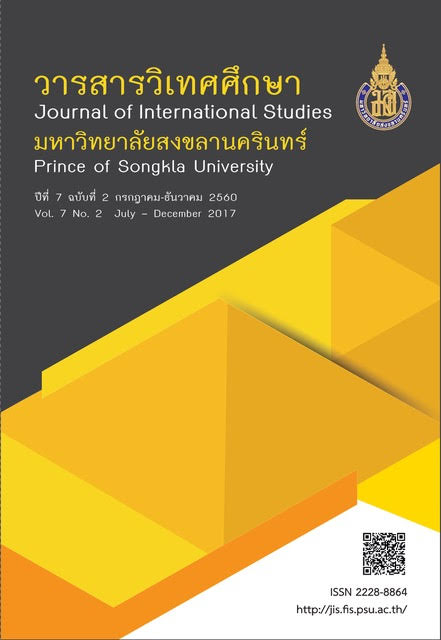Language and Ideal Thought in the Philosophical Teaching of Suphasit Phra Ruang
Main Article Content
Abstract
The research aimed to explore the language and ideal thought in the philosophical teaching of Suphasit Phra Ruang. The objectives of this study were dealt mainly 1) to explore the language aspect used in the philosophical teaching of Suphasit Phra Ruang; 2) to explore the word formation and sound and sematic changes of the loanwords found in the philosophical teaching of Suphasit Phra Ruang; and 3) to explore the ideal thought in the philosophical teaching of Suphasit Phra Ruang. It was found that most short and simple words were applied compactly in the forms of reduplication words, compound words, comparative words, rhyming words and playing with words. Each Vagga contained approximately 5-6 words and often ended completely within one Vagga or no more two Vaggas. Moreover, it was found that Khmer followed by Pali-Sanskrit were loanwords in different Vaggas. Particularly, the word formation of Pali-Sanskrit according to the following forms; Primary Derivative (Kitaka), Compound (Samasa), Secondary Derivative (Tathita) and Prefix (Upasagga) was found obviously. These loanwords were changed through the thorough sound change system namely; insertion, deletion and changes of sound. Not only that, they also were changed through the semantic change system namely; widening of meaning, narrowing of meaning and transferring of meaning. As for the study on the ideal thought in the philosophical teaching of Suphasit Phra Ruang, it was found that there were the obvious and simple ideal thoughts related to the principle of doctrines in Buddhism.
Article Details
Statements and opinions expressed in articles herein are those of the authors and do not necessarily reflect the position of the editors or publisher.
Article, information, text, image, etc. which are published in Journal of International Studies, belong to Journal of International Studies. If anybody or any organization would like to use part or whole of them, they must receive written permission from Journal of International Studies before usage.
References
Anuman Rajadhon, Phraya. (1972). Etymology. Bangkok: Klang Wittaya.
HRH Prince Vajirañanavarorasa. (1992). Buddhist Proverbs Vol.1. 13th ed. Bangkok: Mahamakutarajavidyalaya.
Jinda Petmaneewan. (2009). Pho Khun Ramkhamhaeng: the Great King of Sukhothai Dynasty. Bangkok: Arunrung Publishing.
Kamthorn Kittiphumchai. (1975). Kho Kid Suphasit Phra Ruang. Bangkok: Bangkok Bank.
Kowit Pimpuang. (2008). Pali-Sanskrit Loanwords. Bangkok: Department of Thai language, Kasetsart University.
Kowit Pimpuang. (2008). ‘Word Formation of Pali & Sanskrit Influences to Thai Language’. Journal of Korean Association of Thai Studies, 14 (1), 12-13.
Patna Pengphala. (2000). Pali-Sanskrit in Thai. Bangkok: Ramkhamhaeng University Press.
Prasert Na Nagara and others. (1985). Silpawattanatham Special Edition: Pho Khun Ramkhamhaeng Maidaitaeng Suphasit Phra Ruang. Bangkok: Silpawattanatham.
Suchao Ploychum. (1995). General Philosophy. Bangkok: Mahamakutarajavidyalaya.
The Royal Institute. (2013). Royal Institute Dictionary B.E.2554. Bangkok : Sirivatana Interprint.
Thongsuk Katerote. (2008). Influences of Foreign Languages on Thai. Bangkok: Ramkhamhaeng University Press.
Monier Williams. (2002). A Dictionary of Sanskrit and English. Delhi: Motilal Banarasidass.


